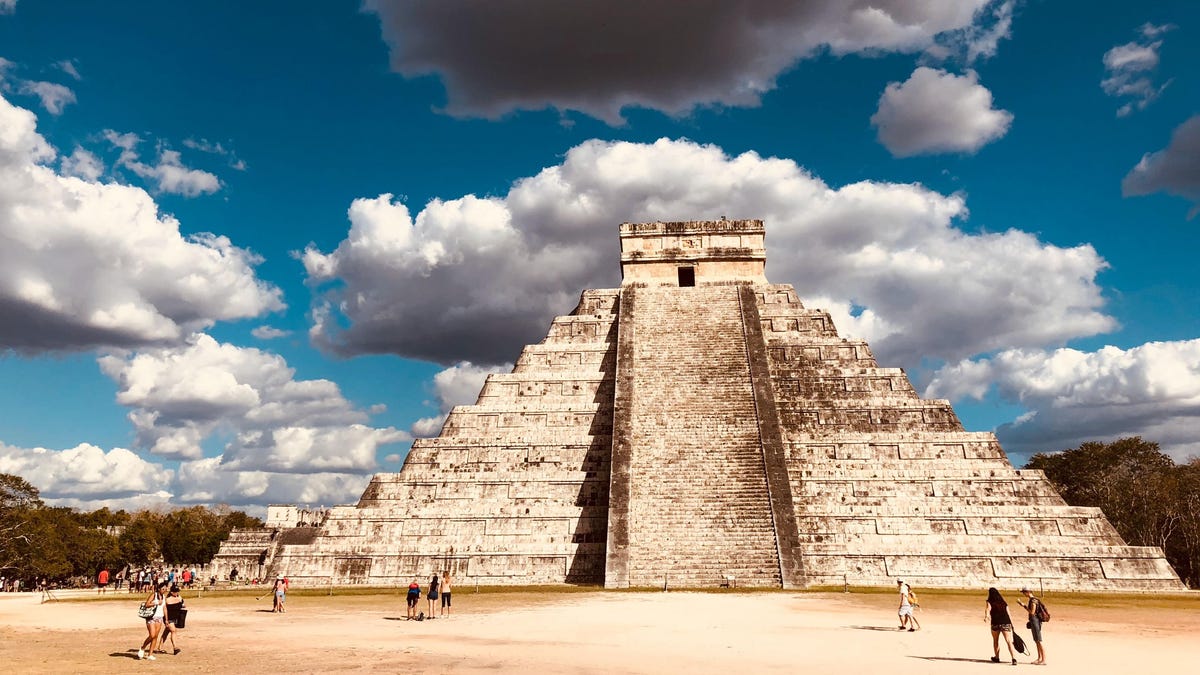World
At Least 64 Boys, Including Twins, Sacrificed in Ancient Maya Underground Chamber

An underground chamber near Chichén Itzá’s Sacred Cenote was found to contain the bones of 64 male children, new research reveals. Genetic tests revealed that at least one-quarter of the children were closely related to at least one other in the chamber and had similar diets as one another, indicating that members of the same family were sacrificed over 500 years ago.
The research was conducted by a team of archaeologists, anthropologists, geneticists, and immunologists at the Max Planck Institute for Evolutionary Anthropology. Their findings contrast from popular ideas about the hundreds of remains in the Sacred Cenote—a natural limestone sinkhole filled with water—which colonial and early twentieth century accounts suggested were primarily those of young women and girls. (More recent analyses of the bones in the cenote indicate both males and females were deposited there.) The team’s research was published today in Nature.
“We found a somehow unexpected all-male burial. The radiocarbon dates of the [assemblage] spans at least 500 years, meaning that this ritual was sustained for at least half a millennium,” said Rodrigo Barquera, an immunologist at the Max Planck Institute for Evolutionary Anthropology and the study’s lead author, in an email to Gizmodo.
The male remains were recovered from the underground chamber, also known as a chultun, in 1967. But only now was the team able to use radiocarbon dating to determine when the chultun was in use: approximately between the early seventh century and the mid-twelfth century. Genetic testing of 64 of the over 100 individuals found in the chultun found that they were all male, and about 25% of the tested males were closely related.
Analysis of carbon and nitrogen isotopes in the remains’ bone collagen revealed the dietary intake of the sacrifice victims, pointing to “specific families (probably those in positions of power) being privileged with the opportunity to have their children included in the ritual burial,” Barquera said.
As noted by the researchers, the sacrificing of twins features prominently in Mayan mythology, and may be related to the relations seen in the chultun remains. Subterranean features like the Sacred Cenote were widely viewed as portals to the underworld and are associated with water and rain—indeed, crucial resources for an ancient society where failed crops could be devastating. Researchers have previously speculated that the children deposited in the cenote were sacrificed as offerings to help the growth of maize or to please the Maya rain deity Chaac.
The result “is not altogether surprising in that it mirrors findings in two studies in Central Mexico with most of the victims at the Templo Mayor being male and those at Tlatelolco being female,” said Cristina Verdugo, a researcher at the University of California-Santa Cruz who was not affiliated with the recent study, in an email to Gizmodo.

“In my own work at Midnight Terror Cave the subadults were all female but my sample was very small (4 individuals),” Verdugo added. “I have proposed that the sex of the deity to whom the sacrifice is made may determine the sex of the victims.”
“The study is also exciting in revealing aspects of the identity of sacrificed individuals that we never imagined before, like blood relatives and the twins,” Verdugo added. “The link between this sacred space, the practice of human sacrifice, and the presence of twins, presents an interesting lens in which to consider the Hero Twins myth and the potential role it played in the practice of human sacrifice.” By Hero Twins myth, Verdugo is referring to the mythical Maya account of twins born to a goddess who avenged their father’s death by defeating the Lords of Death; the twins were then transformed into the Sun and Moon, ushering in a new age.
The team behind the new study also compared the genetics of the individuals in the chultun with present-day Maya, revealing plenty of genetic continuity across the centuries but some allele changes in genes related to disease immunity, especially resistance to Salmonella enterica. Salmonella was previously identified as the cause of an intestinal fever found in a colonial-era mass grave in Oaxaca, itself associated with a 1545 pandemic.
“Even though there is genetic continuity in the region between the people who once inhabited Chichén Itzá and the present-day Mayans from nearby communities, they bear the signatures of adaptation to new diets and diseases that arrived to the region after the conquest,” Barquera added.
Chichén Itzá was one of the liveliest places to be for about 500 years, until colonists arrived in force. But if you were a young boy or girl—especially one from a well-to-do family—it seems it was one of the deadliest, too.
More: Ritual Offerings, Hallucinogenic Plant Found Under Ancient Maya Ball Court







:max_bytes(150000):strip_icc()/roundup-writereditor-loved-deals-tout-f5de51f85de145b2b1eb99cdb7b6cb84.jpg)


